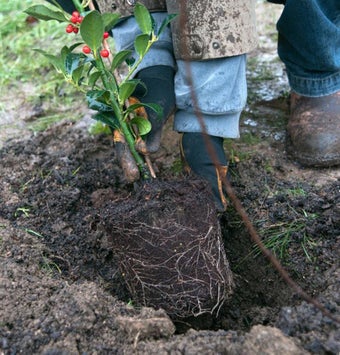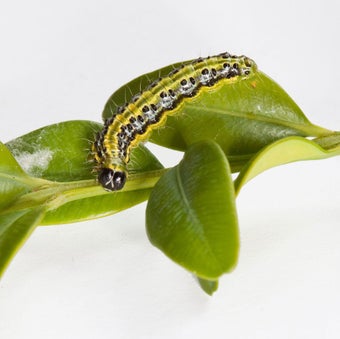
Quick facts
Common name - Box sucker
Scientific name - Psylla buxi
Plants affected - Buxus sempervirens
Main symptoms - In spring a white waxy substance produced by flattened pale green insects can be evident. Leaves at the shoot tip are cupped
Most active - April–early June
What is box sucker?
The psyllids or plant suckers are a group of sucking true bugs (Hemiptera). There are more than 40 species found in Britain. A gallery and more information on these species can be found at .
Box feeds at the shoot tips of box plants in spring, damage is usually minor and can be tolerated.
Box is host to several species and suffers from a number of other problems .
Symptoms
- In spring a white waxy substance covering a droplet of liquid, excreted by box nymphs, often spills from the cupped leaves, leaving white waxy smears on foliage
- In April to May flattened, pale green, wingless nymphs live among the leaves at the shoot tips
- New shoot extension in spring can be stunted and the cupped leaves at the shoot tips produce a cabbage-like appearance
- Any damage is usually superficial and this insect is part of the this plant supports
Management
Damage from this insect is superficial and so it is not necessary to manage this insect especially on established box hedges or topiary plants that are going to be clipped. It is part of the box plants support.
- Often suckers do not affect the growth or vigour of plants and so should be tolerated
- Encouraging predators and other natural enemies of suckers, in the garden, such as birds , ladybirds , wasps and ground beetles will help keep damage to a minimum
- Regular clipping removes affected parts of the plant
Biology
- Box overwinters as eggs on its host plant. These hatch in spring when new growth begins
- The nymphs suck the plant's and secrete chemicals that stunt new growth and distort the leaf shape, although this damage is not usually serious
- The nymphs excrete a sugary liquid called honeydew that is coated with a white waxy secretion from their bodies
- Yellowish brown winged adults, 2-3 mm long (1/8 in), develop in May to June
- No further damage occurs after June










